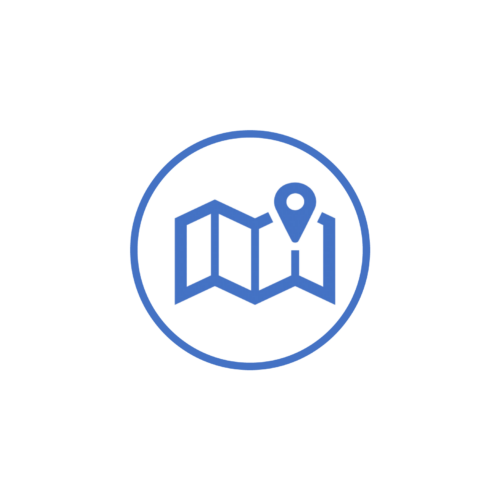[et_pb_section fb_built=”1″ admin_label=”Attention” _builder_version=”4.25.1″ background_color=”RGBA(255,255,255,0)” background_image=”https://workexcellence.com/wp-content/uploads/2024/05/1.jpg” background_position=”top_center” background_blend=”overlay” min_height=”800px” custom_padding=”0||0||true|false” z_index_tablet=”500″ box_shadow_horizontal_tablet=”0px” box_shadow_vertical_tablet=”0px” box_shadow_blur_tablet=”40px” box_shadow_spread_tablet=”0px” collapsed=”on” global_colors_info=”{}”][et_pb_row use_custom_gutter=”on” gutter_width=”1″ admin_label=”Above the Fold Header” _builder_version=”4.20.0″ _module_preset=”84382ea5-d92b-46f5-8c5d-76d1bbb82759″ background_enable_image=”off” positioning=”none” position_origin_a=”center_center” position_origin_a_tablet=”center_center” position_origin_a_phone=”center_center” position_origin_a_last_edited=”on|desktop” position_origin_f_tablet=”” position_origin_f_phone=”” position_origin_f_last_edited=”on|desktop” position_origin_r_tablet=”” position_origin_r_phone=”” position_origin_r_last_edited=”on|desktop” width_tablet=”80%” width_phone=”85%” custom_margin_tablet=”||||false|false” custom_margin_phone=”||||false|false” custom_margin_last_edited=”on|desktop” custom_padding=”3.2%|0px|3.2%|0px|true|false” custom_padding_phone=”7%||7%||true|false” animation_direction=”left” hover_transition_duration=”150ms” positioning_tablet=”none” positioning_phone=”none” positioning_last_edited=”on|desktop” use_custom_width=”on” width_unit=”off” custom_width_percent=”100%” collapsed=”off” global_colors_info=”{}”][et_pb_column type=”4_4″ _builder_version=”4.20.0″ _module_preset=”default” custom_padding=”|||” animation_direction=”left” global_colors_info=”{}” custom_padding__hover=”|||”][et_pb_text _builder_version=”4.25.1″ _module_preset=”default” text_text_color=”#FFFFFF” text_font_size=”41px” text_line_height=”1.5em” header_text_align=”center” header_text_color=”#FFFFFF” header_font_size=”60px” header_letter_spacing=”3px” custom_margin=”575px||||false|false” custom_margin_tablet=”550px||||false|false” custom_margin_phone=”450px||||false|false” custom_margin_last_edited=”on|desktop” custom_padding=”||||false|false” text_font_size_tablet=”40px” text_font_size_phone=”40px” text_font_size_last_edited=”on|phone” header_font_size_tablet=”40px” header_font_size_phone=”40px” header_font_size_last_edited=”on|phone” global_colors_info=”{}”]
Case Study:
Beyond Rebranding: Achieving Organizational Alignment with the Work Excellence Method
[/et_pb_text][/et_pb_column][/et_pb_row][/et_pb_section][et_pb_section fb_built=”1″ custom_padding_last_edited=”on|phone” admin_label=”Interest Copywriting” _builder_version=”4.16″ min_height=”766px” custom_margin_tablet=”” custom_margin_phone=”” custom_margin_last_edited=”on|tablet” custom_padding=”80px|0px|29px|0px|false|false” custom_padding_tablet=”60px|0px|0px|0px|false|false” custom_padding_phone=”50px|0px|0px|0px|false|false” global_colors_info=”{}”][et_pb_row _builder_version=”4.20.0″ _module_preset=”default” custom_margin=”|auto|41px|auto|false|false” custom_padding=”0.4%|0px|0.7%|0px|false|false” global_colors_info=”{}”][et_pb_column type=”4_4″ _builder_version=”4.20.0″ _module_preset=”default” global_colors_info=”{}”][et_pb_text _builder_version=”4.25.1″ _module_preset=”default” text_text_color=”#002c75″ custom_margin=”||5px||false|false” custom_margin_tablet=”||50px||false|false” custom_margin_phone=”||50px||false|false” custom_margin_last_edited=”on|phone” custom_padding=”|50px|||false|false” custom_padding_tablet=”|50px|||false|false” custom_padding_phone=”|10px||10px|false|true” custom_padding_last_edited=”on|tablet” global_colors_info=”{}”]
![]() YOU ARE WHERE YOU ARE: A technology services company had recently undergone a restructuring where it acquired several small ventures. They engaged Work Excellence for support through a rebranding initiative.
YOU ARE WHERE YOU ARE: A technology services company had recently undergone a restructuring where it acquired several small ventures. They engaged Work Excellence for support through a rebranding initiative.
[/et_pb_text][et_pb_text _builder_version=”4.25.1″ _module_preset=”default” text_text_color=”#002c75″ custom_margin=”||55px||false|false” custom_margin_tablet=”||50px||false|false” custom_margin_phone=”||50px||false|false” custom_margin_last_edited=”on|tablet” custom_padding=”|100px|||false|false” custom_padding_tablet=”|50px|||false|false” custom_padding_phone=”|10px||10px|false|true” custom_padding_last_edited=”on|phone” global_colors_info=”{}”]
 WE MEET YOU WHERE YOU ARE AT: During our initial discussions of the rebranding initiative, we realized a much deeper issue of lack of alignment. With the integration of several CEOs from newly acquired ventures into the executive team, a significant gap emerged within the C-Suite. Each executive brought their unique approach with their own ways of thinking and working, along with a variety of preferred tools. Unfortunately, these leaders had not yet had or taken the time to get on the same page. This lack of alignment led to the surfacing of additional challenges beyond the rebranding effort. Issues such as go-to-market problems and operational inefficiencies came to light. The absence of clear priorities concerning products and services compounded these challenges, resulting in wasted resources, and keeping these teams in a cycle of unproductive churn.
WE MEET YOU WHERE YOU ARE AT: During our initial discussions of the rebranding initiative, we realized a much deeper issue of lack of alignment. With the integration of several CEOs from newly acquired ventures into the executive team, a significant gap emerged within the C-Suite. Each executive brought their unique approach with their own ways of thinking and working, along with a variety of preferred tools. Unfortunately, these leaders had not yet had or taken the time to get on the same page. This lack of alignment led to the surfacing of additional challenges beyond the rebranding effort. Issues such as go-to-market problems and operational inefficiencies came to light. The absence of clear priorities concerning products and services compounded these challenges, resulting in wasted resources, and keeping these teams in a cycle of unproductive churn.
[/et_pb_text][et_pb_text _builder_version=”4.25.1″ _module_preset=”default” text_text_color=”#002c75″ custom_margin=”||5px||false|false” custom_margin_tablet=”||50px||false|false” custom_margin_phone=”||50px||false|false” custom_margin_last_edited=”on|desktop” custom_padding=”|100px|||false|false” custom_padding_tablet=”|50px|||false|false” custom_padding_phone=”|10px||10px|false|true” custom_padding_last_edited=”on|phone” global_colors_info=”{}”]
 PICK A STARTING POINT: Once we realized the teams were not on the same page, we shifted from the original rebranding initiative to leveraging the structure of the Work Excellence method to establish overall organizational alignment. It was critical to synchronize the teams in order to understand organizational priorities to streamline decision-making and problem-solving.
PICK A STARTING POINT: Once we realized the teams were not on the same page, we shifted from the original rebranding initiative to leveraging the structure of the Work Excellence method to establish overall organizational alignment. It was critical to synchronize the teams in order to understand organizational priorities to streamline decision-making and problem-solving.
[/et_pb_text][et_pb_text _builder_version=”4.25.1″ _module_preset=”default” text_text_color=”#002c75″ custom_margin=”||5px||false|false” custom_margin_tablet=”||75px||false|false” custom_margin_phone=”||75px||false|false” custom_margin_last_edited=”on|tablet” custom_padding=”|100px|||false|false” custom_padding_tablet=”|50px|||false|false” custom_padding_phone=”|10px||10px|false|true” custom_padding_last_edited=”on|phone” global_colors_info=”{}”]
 CONDUCT A WORKSHOP: Initially, we had conducted a workshop with subject matter experts focusing on the rebranding initiative. At this stage, our approach centered more on implementing the Work Excellence method through consulting and coaching rather than explicitly teaching it. This application aimed to address the immediate challenges associated with the rebranding process. However, once we discovered the larger alignment issues, we adjusted our approach to hold further workshops designed to teach the method to the leadership teams. During these sessions, we provided comprehensive instruction on the Work Excellence method. Each leader created their page sets, enabling them to effectively lead their respective teams given the overall organizational direction.
CONDUCT A WORKSHOP: Initially, we had conducted a workshop with subject matter experts focusing on the rebranding initiative. At this stage, our approach centered more on implementing the Work Excellence method through consulting and coaching rather than explicitly teaching it. This application aimed to address the immediate challenges associated with the rebranding process. However, once we discovered the larger alignment issues, we adjusted our approach to hold further workshops designed to teach the method to the leadership teams. During these sessions, we provided comprehensive instruction on the Work Excellence method. Each leader created their page sets, enabling them to effectively lead their respective teams given the overall organizational direction.
[/et_pb_text][/et_pb_column][/et_pb_row][/et_pb_section][et_pb_section fb_built=”1″ _builder_version=”4.20.0″ _module_preset=”default” background_color=”#4372c4″ custom_margin=”-2px||||false|false” global_colors_info=”{}”][et_pb_row _builder_version=”4.20.0″ _module_preset=”default” custom_padding=”0%|0px|0.3%|0px|false|false” global_colors_info=”{}”][et_pb_column type=”4_4″ _builder_version=”4.20.0″ _module_preset=”default” global_colors_info=”{}”][et_pb_text _builder_version=”4.20.0″ _module_preset=”default” header_2_text_color=”#FFFFFF” global_colors_info=”{}”]
 SOLVE A CHALLENGE
SOLVE A CHALLENGE
[/et_pb_text][et_pb_text _builder_version=”4.25.1″ _module_preset=”default” text_text_color=”#FFFFFF” text_font_size=”25px” text_line_height=”1.9em” text_font_size_tablet=”25px” text_font_size_phone=”25px” text_font_size_last_edited=”on|phone” global_colors_info=”{}”]Through the implementation of the L0 and L1 page sets, the organization and its departments formulated clear direction, workflows, measurements, and improvement plans. These plans provided clarity on priorities concerning products and services, as well as guidance on targeted initiatives and required resources. As a result, teams experienced more efficient meetings and reporting mechanisms, leading to enhanced communication with the board.
Tangible results observed included:
- Shortened new product development cycle from 18 months to 6 months
- Reduced marketing content production time from 3-4 weeks to 3 days
[/et_pb_text][/et_pb_column][/et_pb_row][/et_pb_section][et_pb_section fb_built=”1″ _builder_version=”4.20.0″ _module_preset=”default” global_colors_info=”{}”][et_pb_row _builder_version=”4.20.0″ _module_preset=”default” custom_padding=”0%|0px|0.3%|0px|false|false” global_colors_info=”{}”][et_pb_column type=”4_4″ _builder_version=”4.20.0″ _module_preset=”default” global_colors_info=”{}”][et_pb_text _builder_version=”4.20.0″ _module_preset=”default” header_2_text_color=”#082c73″ custom_padding=”||46px|||” global_colors_info=”{}”]
 Expand And Scale
Expand And Scale
[/et_pb_text][/et_pb_column][/et_pb_row][et_pb_row column_structure=”1_2,1_2″ _builder_version=”4.20.0″ _module_preset=”default” custom_padding=”0%|0px|5.8%|0px|false|false” global_colors_info=”{}”][et_pb_column type=”1_2″ _builder_version=”4.20.0″ _module_preset=”default” global_colors_info=”{}”][et_pb_text _builder_version=”4.25.1″ _module_preset=”default” text_text_color=”#082c73″ text_font_size=”19px” text_line_height=”1.9em” header_2_text_color=”#FFFFFF” background_color=”#efefef” custom_margin=”||||false|false” custom_padding=”50px|30px|50px|30px|true|true” text_font_size_tablet=”20px” text_font_size_phone=”19px” text_font_size_last_edited=”on|phone” global_colors_info=”{}”]
The teams continued to work their current plans and apply the Method to address other challenges such as those seen in the IT and Operations departments. With the newfound organizational alignment, teams found themselves equipped to not only tackle immediate issues but also engage in strategic and long-range planning initiatives. Initiatives are underway to extend this alignment by training L2 Leaders and other members of the organization.
In conclusion, this case study demonstrates the transformative impact of organizational alignment facilitated by the Work Excellence Method. What began as a rebranding initiative for a technology services company revealed deeper issues stemming from lack of alignment among the executive team. By implementing the Work Excellence method, the company successfully addressed these challenges, leading to streamlined decision-making, improved resource allocation, and enhanced productivity.
[/et_pb_text][/et_pb_column][et_pb_column type=”1_2″ _builder_version=”4.20.0″ _module_preset=”default” global_colors_info=”{}”][et_pb_image src=”https://workexcellence.com/wp-content/uploads/2024/05/2.jpg” alt=”Technology Services” title_text=”Technology Services” _builder_version=”4.25.1″ _module_preset=”default” max_height=”500px” global_colors_info=”{}”][/et_pb_image][/et_pb_column][/et_pb_row][/et_pb_section]


 SOLVE A CHALLENGE
SOLVE A CHALLENGE